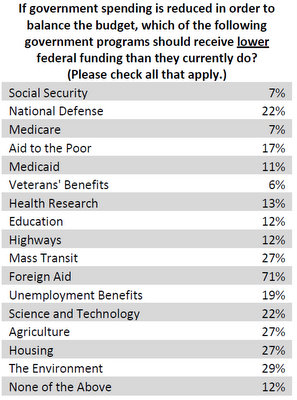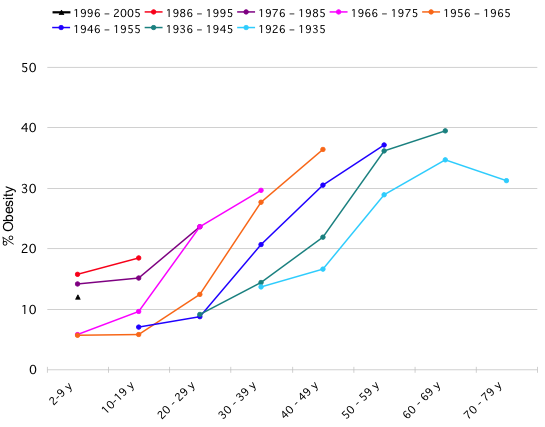Heather J. sent along a nice illustration of white privilege, courtesy of PostSecret. PostSecret features anonymous confessions on postcards and, in this confession, a person confesses that being white and female facilitates her shoplifting:  The card is a great example of the flip side of racial profiling: those who do not carry the stigmatized features aren’t simply treated fairly, they’re given a benefit of the doubt that allows them to get away with the very thing that others are suspected of doing.
The card is a great example of the flip side of racial profiling: those who do not carry the stigmatized features aren’t simply treated fairly, they’re given a benefit of the doubt that allows them to get away with the very thing that others are suspected of doing.
Data from The Institute for College Access and Success shows that the number of students who graduate with at least $40,000 in student loans increased nine-fold between 1996 and 2008.
Sally Raskoff at Everyday Sociologyoffers some explanations for the data: (1) College has been getting more expensive; among other reasons, states cut education budgets. (2) For-profit colleges have also become a larger proportion of all colleges and students in these colleges are more likely to take out loans. (3) Given a bad economy, students are less likely to have jobs while in school. Other explanations? Stories?
Lisa Wade, PhD is an Associate Professor at Tulane University. She is the author of American Hookup, a book about college sexual culture; a textbook about gender; and a forthcoming introductory text: Terrible Magnificent Sociology. You can follow her on Twitter and Instagram.A full-time worker making nine dollars an hour cannot raise a family above the poverty line. A paper by Sheldon Danziger and David Ratner demonstrates that fewer women survive on less than $9 an hour today than (its adjusted equivalent) in 1979. The same cannot be said for men:  The authors write:
The authors write:
…changes in the labor market over the past thirty-five years, such as labor-saving technological changes, increased globalization, declining unionization, and the failure of the minimum wage to keep up with inflation, have made it more difficult for young adults to attain the economic stability and self-sufficiency that are important markers of the transition to adulthood.
This is just more evidence of the shrinking of the middle class; solid working class jobs that will allow you to buy a modest home are disappearing. Hat tip to Family Inequality and Karl Bakeman’s blog.
Lisa Wade, PhD is an Associate Professor at Tulane University. She is the author of American Hookup, a book about college sexual culture; a textbook about gender; and a forthcoming introductory text: Terrible Magnificent Sociology. You can follow her on Twitter and Instagram.Sixty-two percent of Americans think that the country should reduce spending in order to cut the deficit. What do they think we should cut? Nothing really.
Well, nothing except foreign aid.
Kevin Drum at Mother Jones reminds us that foreign aid is about one percent of the U.S. budget.
…there were only four [other] areas that even a quarter of the population was willing to cut: mass transit, agriculture, housing, and the environment. At a rough guess, these areas account for about 3% of the federal budget. You could slash their budgets by a third and still barely make a dent in federal spending.
The Economist, via BoingBoing.
Lisa Wade, PhD is an Associate Professor at Tulane University. She is the author of American Hookup, a book about college sexual culture; a textbook about gender; and a forthcoming introductory text: Terrible Magnificent Sociology. You can follow her on Twitter and Instagram.This cute two-minute video explains it:
Feminist Frequency, via my friend Ronke O.
Lisa Wade, PhD is an Associate Professor at Tulane University. She is the author of American Hookup, a book about college sexual culture; a textbook about gender; and a forthcoming introductory text: Terrible Magnificent Sociology. You can follow her on Twitter and Instagram.This graph, from Flowing Data, shows the obesity rates of different generational cohorts as they age. Each differently colored lines represents people who were born in different decades (between 1926 and 1935 and on up). Ascending lines represent higher percentages of obesity. Horizontal progress represents age.
So, first things first: rates of obesity go up as a cohort ages.
What else?
People born after 1975 are starting out with higher rates of obesity than people born between 1956 and 1975.
And.
Obesity rates seem to rise at a pretty consistent rate as cohorts age. So, if a cohort starts out with a high rate of obesity, they will have an ever higher rate 10 years later, and an even higher rate ten years after that, and so on.
The consequence: Higher rates of obesity overall for each cohort that follows the last.
The data for the most recent cohort, born between 1996 and 2005, however, looks like it might be bucking the trend.
Lisa Wade, PhD is an Associate Professor at Tulane University. She is the author of American Hookup, a book about college sexual culture; a textbook about gender; and a forthcoming introductory text: Terrible Magnificent Sociology. You can follow her on Twitter and Instagram.Dmitriy T.M. alerted us to a new report by the Guttmacher Institute on the characteristics of women who have abortions. There’s lots of interesting data there, including the figure below that tells us how women are paying for their abortions.
According to the study, 33% of the women in their study were uninsured, but 57% of them paid for their abortions out-of-pocket. Why?
I was able to track down two reasons. First, medicaid only covers abortions in the cases of rape and incest or if a woman might die if she proceeds with the pregnancy. Second, according to another report by Guttmacher, 15 states deny or restrict the coverage of private insurance companies or the insurance plans of employees of the state:
The fact that non-therapeutic abortion is not covered by medicaid and by some private insurers, of course, hurts poor women and their families the most. While middle and upper class women can always find the money to make up for the gap in their insurance, poor women may not be able to do so.
Lisa Wade, PhD is an Associate Professor at Tulane University. She is the author of American Hookup, a book about college sexual culture; a textbook about gender; and a forthcoming introductory text: Terrible Magnificent Sociology. You can follow her on Twitter and Instagram.J.L. Bell at Oz and Ends counted the number of rumors about President G.W. Bush and President Obama that were identified and determined by rumor-validation site, snopes.com, to be true, false, a mixture of true and false, or uncertain. It turns out, there are a lot more rumors and a lot more false rumors about Obama than there were about Bush:
Jay Livingston summarizes:
In less than two years, Obama rumor-mongers have had nearly twice the output that their Bush counterparts managed in eight years – 87 to 47. And while the Bush rumors split almost evenly true-false, false Obama rumors dwarfed the true ones. The false rumors about Obama outnumbered the total number of rumors about Bush. And while the lies about Obama are almost all negative, some of the false rumors about Bush are quite flattering, along the lines of the George Washington cheery tree rumor – like the rumor that had Bush paying for the funeral of a boy who had drowned near the Crawford ranch.
Looking closer at the mixed rumors, Bell reports that:
I delved down to the stories that the site designates as a mixture of truth and falsehood. For Obama, in most cases the truth is innocuous while the lie reflects poorly on the President, particularly photographs that are misrepresented or show behavior that produced no complaints when his predecessors did the same. In contrast, in this mixture of truth and falsehood about George W. Bush praying with an injured soldier, the lie reflected well on that President…
Looking at the last two Presidential candidate losers reveals the same pattern: more false rumors about Kerry than McCain.
Bell interprets this evidence to mean that Republicans fight dirtier than Democrats. What do you think?
Lisa Wade, PhD is an Associate Professor at Tulane University. She is the author of American Hookup, a book about college sexual culture; a textbook about gender; and a forthcoming introductory text: Terrible Magnificent Sociology. You can follow her on Twitter and Instagram.





